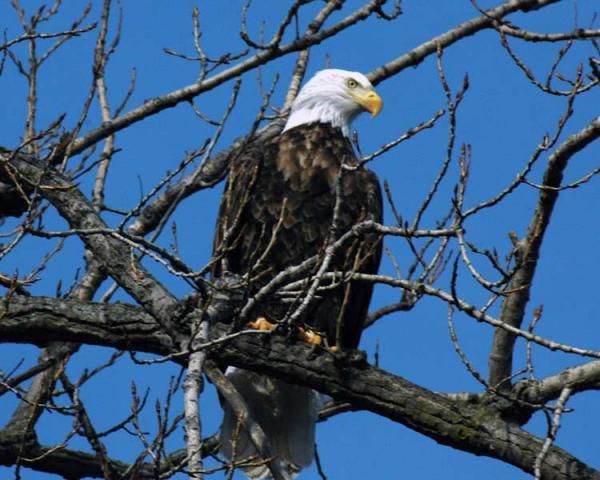Bald Eagles in Utah Died of West Nile

Wildlife experts in Utah have found the culprit behind an unusual string of bald eagle deaths: West Nile virus.
Laboratory tests confirmed that the virus was responsible for the deaths of 27 bald eagles in the state in recent weeks, according to the Utah Division of Wildlife Resources (DWR).
The rash of deaths was at first mysterious: The bald eagles appeared to be dying of some type of disease, instead of blunt injuries, which are the usual cause of death of bald eagles in the state, according to the Washington Post. [5 Things You Need to Know About West Nile Virus]
And West Nile virus typically affects birds only in the summer months, when the mosquitoes that spread the disease are active. But wildlife experts suspect that the bald eagles contracted West Nile after eating water birds, called eared grebes, with the disease that recently died on the Great Salt Lake, the DWR said. In the winter, dead animals are the main source of food for bald eagles.
The West Nile virus affecting bald eagles does not post a risk to humans, who contract the disease through mosquito bites, typically in the summer months, according to JoDee Baker, an epidemiologist with the Utah Department of Health.
But people who encounter dead birds in the state, including bald eagles, should still not handle or touch the birds, Baker said. Instead, they should call the nearest DWR office.
West Nile virus belongs to a group of viruses called flaviviruses, which are usually spread by ticks and mosquitoes. West Nile virus is most commonly transmitted from birds to humans through mosquito bites. Most people who become infected with the disease do not have symptoms.
Sign up for the Live Science daily newsletter now
Get the world’s most fascinating discoveries delivered straight to your inbox.
Follow Rachael Rettner@RachaelRettner. Follow LiveScience @livescience, Facebook & Google+. Original article on LiveScience.

Rachael is a Live Science contributor, and was a former channel editor and senior writer for Live Science between 2010 and 2022. She has a master's degree in journalism from New York University's Science, Health and Environmental Reporting Program. She also holds a B.S. in molecular biology and an M.S. in biology from the University of California, San Diego. Her work has appeared in Scienceline, The Washington Post and Scientific American.











